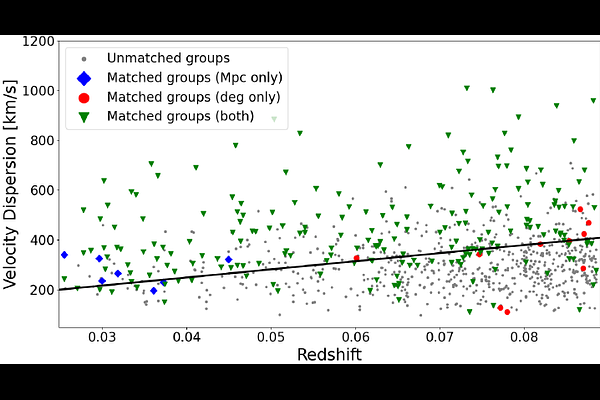AXES-SDSS: Solving the puzzle of X-ray emission of optical galaxy groups via a modified Hausdorff distance

AXES-SDSS: Solving the puzzle of X-ray emission of optical galaxy groups via a modified Hausdorff distance
J. Kosowski, A. Finoguenov, E. Tempel, G. A. Mamon
AbstractThe identification of X-ray and CMB sources as galaxy groups and clusters is a prerequisite for cluster cosmology. But the identification of groups, especially nearby ones, suffers from projection effects which in turn affect the purity of the sample. In X-rays, the position of the cluster can be given either by the peak of the emission, or by the full information content of the cluster image. Similarly, the optical center, or its member galaxies, can describe the optical counterpart. With the progress of numerical simulations, it is currently feasible to reproduce both the optical group membership assignment and the behavior of the group outskirts in X-rays, and therefore there is an opportunity to define a reproducible group identification procedure. We performed two-way matching between X-ray contours, drawn at a fixed surface brightness level corresponding to a baryonic overdensity of ~500, to the projected galaxy positions using a modified Hausdorff distance (MHD). We used the volume-limited SDSS group catalog to evaluate the purity and completeness of the procedure, maintaining the constant performance of the optical group finder with redshift. We find that an MHD of 0.631 Mpc provides 90% purity. This is a clear improvement over the methods that rely on the optical counterparts' distance and richness. We study the purity versus MHD and the completeness versus redshift and velocity dispersion. Over half of nearby groups have X-ray emission, even those with velocity dispersions as low as 200km/s; this has never previously been demonstrated. The bulk of these groups follow the same scaling relations as the groups with a small separation between the optical and X-ray centers, removing feedback as an explanation for the lack of matches in previous studies. Instead, the problem is caused by over-merging in the optical group catalog construction and source confusion in X-rays.